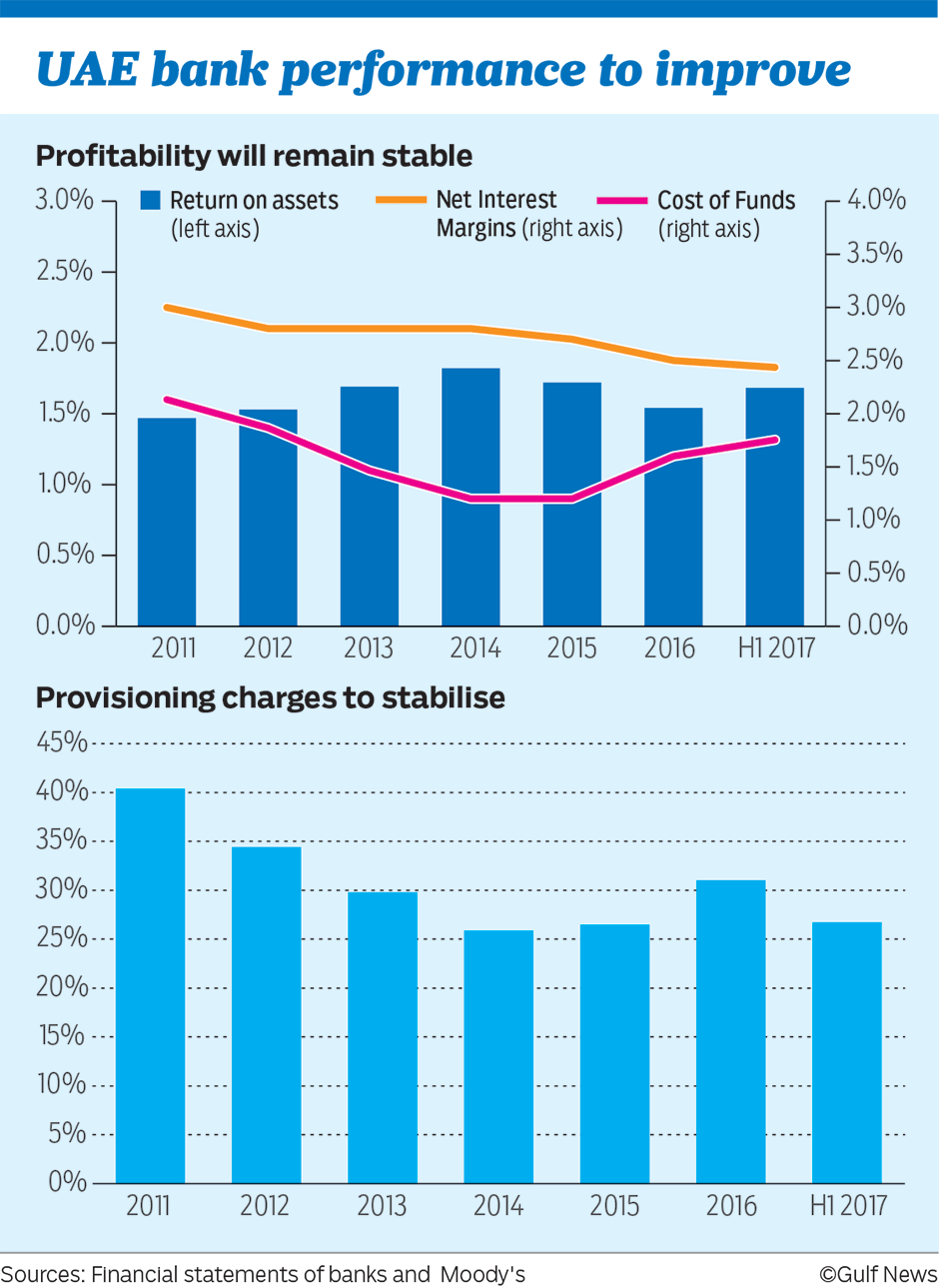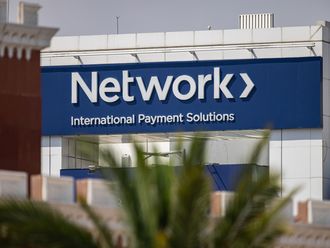Dubai: The UAE’s banking sector outlook remains stable reflecting economic resilience, strong capitalisation, stable funding and liquidity conditions, according to global credit rating agency Moody’s.
“Faster economic growth in 2018 will support the banking system’s credit growth, and we forecast credit growth of around 5 per cent in 2018, after a forecast lower growth of around 2 per cent in 2017, from 5.8 per cent in 2016 and 8 per cent in 2015,” said Mik Kabeya, an analyst at Moody’s.
Non-oil activity including government spending in Dubai and robust economic activity in trade and financial services is expected to support growth in the UAE economy. The construction of major infrastructure projects in Dubai in preparation for the 2020 World Expo is likely to contribute to growth. Non-oil gross domestic product cooled during 2016, largely reflecting constrained public-sector spending.
Weaker credit growth so far in 2017 reflects slower economic growth and business activity in response to constrained public spending, combined with a technical reduction in the system balance sheet following the merger between First Gulf Bank and National Bank of Abu Dhabi, concluded in March 2017 to create First Abu Dhabi Bank (FAB). Given FAB’s large market share (23.5 per cent in terms of assets in June, the adjustment in its consolidated size impacts system growth in 2017.
Moody’s expect high concentrations of loans to government-related institutions (GRIs) and to a volatile real-estate sector pose downside risks to loan quality.
Loan performance of large corporate- and government-related issuers (GRIs) will remain resilient, however. Ongoing resolution of legacy impairments, including from Dubai-based GRIs and large corporates, will limit net problem loan formation in this segment.
Moody’s expect household and retail borrowers’ loan performance to continue to weaken, however, as job losses and employment uncertainty constrain borrowers’ repayment capacity. Job cuts at government-related entities and in the private sector reflect the adjustment to a structural reduction in hydrocarbon revenues and to lower sales volumes. Retail loans accounted for 24 per cent of the banking system total loans as of June 2017.
The quality of loans to small- and medium-sized enterprises (SMEs) are also expected to remain pressured. Delinquencies in the segment reflect the softer economy, which is hitting small businesses and individuals disproportionately.
Loan performance is expected to soften modestly next year following sluggish economic growth this year. “We expect problem loans to rise modestly over the next 12 to 18 months, as weaker economic growth and constrained public-sector spending in 2017 pressure the finances of borrowers. Nonperforming loans (NPLs) will increase to 5.5 per cent to 6 per cent of gross loans by end 2018, from 5.3 per cent at June 2017 (5 per cent at December 2016),” said Kabeya.
Moody’s expects banking sector profitability to remain strong, with a net income measuring around 1.5 per cent to 1.7 per cent of tangible banking assets over the next 12 to 18 months. Thinner margins will be balanced by lower operating expenses and stabilising provision charges.
Capital levels will remain strong over the next 12 to 18 months for the UAE’s banks, with system-wide tangible common equity at between 14 per cent and 16 per cent of risk-weighted assets.
UAE banks are expected to remain primarily deposit-funded, with a fair recourse to more volatile market funding. Stabilising oil prices and international bond issuances are expected to continue to support funding and liquidity conditions in the country.











